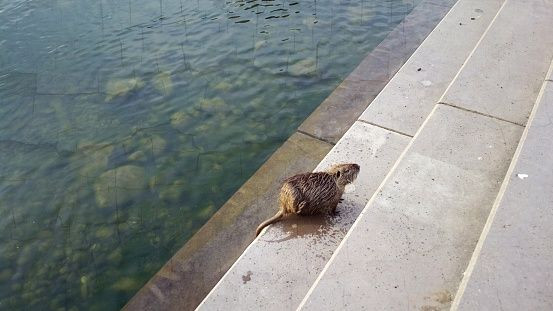Rats, Bedbugs, Mosquitoes Evolve Rapidly In Urban Environments: Study

The recent uproar about seats on a British Airways flight crawling with bedbugs is only one of the unintended consequences that urbanization worldwide has on evolution according to a team of researchers. The impact of urban environments of animals is deeper and more rapid that we could have estimated.
As our cities grow, so do the creatures living there. As the modern living landscape changes rapidly, the animals and plants around us have to change to adapt. A paper published by Marc Johnson, associate professor of biology at the University of Toronto Mississauga, and Jason Munshi-South, associate professor of biological sciences at Fordham University says that we might have cause many unintended changes in the evolutionary timeline.
"As we build cities, we have little understanding of how they are influencing organisms that live there," says Johnson in a report published in the University of Toronto’s official website. Organisms adapting to change is a good thing, but it affects the environment. Native species thriving will support the ecosystem and help replenish it, but if survivors from different ecosystems adapt to a city lifestyle, it could spell disaster for the native species and the ecological balance.
Some of these organisms that adapt to our cities might increase the transmission of disease. Bedbugs, which were scarce two decades ago, have adapted to the insecticides that used to kill them and we see an explosion in numbers as suggested by the recent British Airways flight crawling with bedbugs.
The team studied the data they had on urbanization and evolution to understand the effects of cities on animals that live in them and published their results in the journal Science.
"Traditionally, we've thought about evolution as a long-term process driven by environmental pressures and the interactions between species. But now there is a new driver that is rapidly changing many other species, which is how they interact with humans and our built environment," Munshi-South said in the report. "Humans and our cities are one of the most dominant forces of contemporary evolution now," he added.
Native species are the worst affected by changes in ecosystems. Loss of habitat pose challenges to all kinds of species. According to the report, “the researchers assessed various means of genetic adaptation, such as mutation, the movement of genes through dispersal, neutral evolution and adaptive evolution through Darwinian natural selection, concluding that the urban environment has an impact on each of these mechanisms of evolution. ”
The study includes mammals, plants, birds, amphibians, reptiles, insects, and viruses. The team identified the evolutionary impacts on species on a wide variety of species ranging from the common blackbird in Europe to white clovers and white-footed mice in North America. The study showed changes in each particular species. “The white-footed mice in New York City became differentiated from each other after urbanization, due to their isolation in various parks,” said the report.
"We've created a novel ecosystem that no organism has ever seen before," said Johnson. He called for governments’ to understand the impact we create on animals. There has to be further research on the minute changes in behavior and physical features in urban animals.
The evolution of animals in urban environments is much more rapid than in nature. The researchers quoted the example of mosquitoes in London that have evolved to live in the underground stations in a way that they no longer need to feed on blood to produce eggs. This change is so rapid because the underground system is a relatively recent development in human history. They also have no need to become dormant during the winter. “Unfortunately, these mosquitoes can carry a number of diseases and are now found in New York City, Chicago, and Los Angeles, too. Our healthcare systems may be required to adapt in response,” the report added.
Urban evolution can be used as a tool to educate city dwellers and others about the reality and importance of evolutionary biology. According to Johnson and Munshi-South, "we need to think about the impact our designs have on native species and whether we can design them to be kinder to ourselves and the environment," considering ways to conserve native species and mitigate the prevalence of disease-carrying pests. "People who don't believe in evolution need not go further than their backyards to see evidence of it," Johnson added.
© Copyright IBTimes 2024. All rights reserved.





















